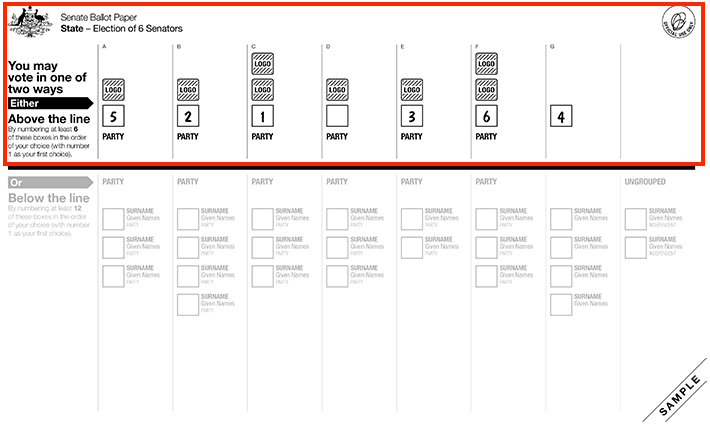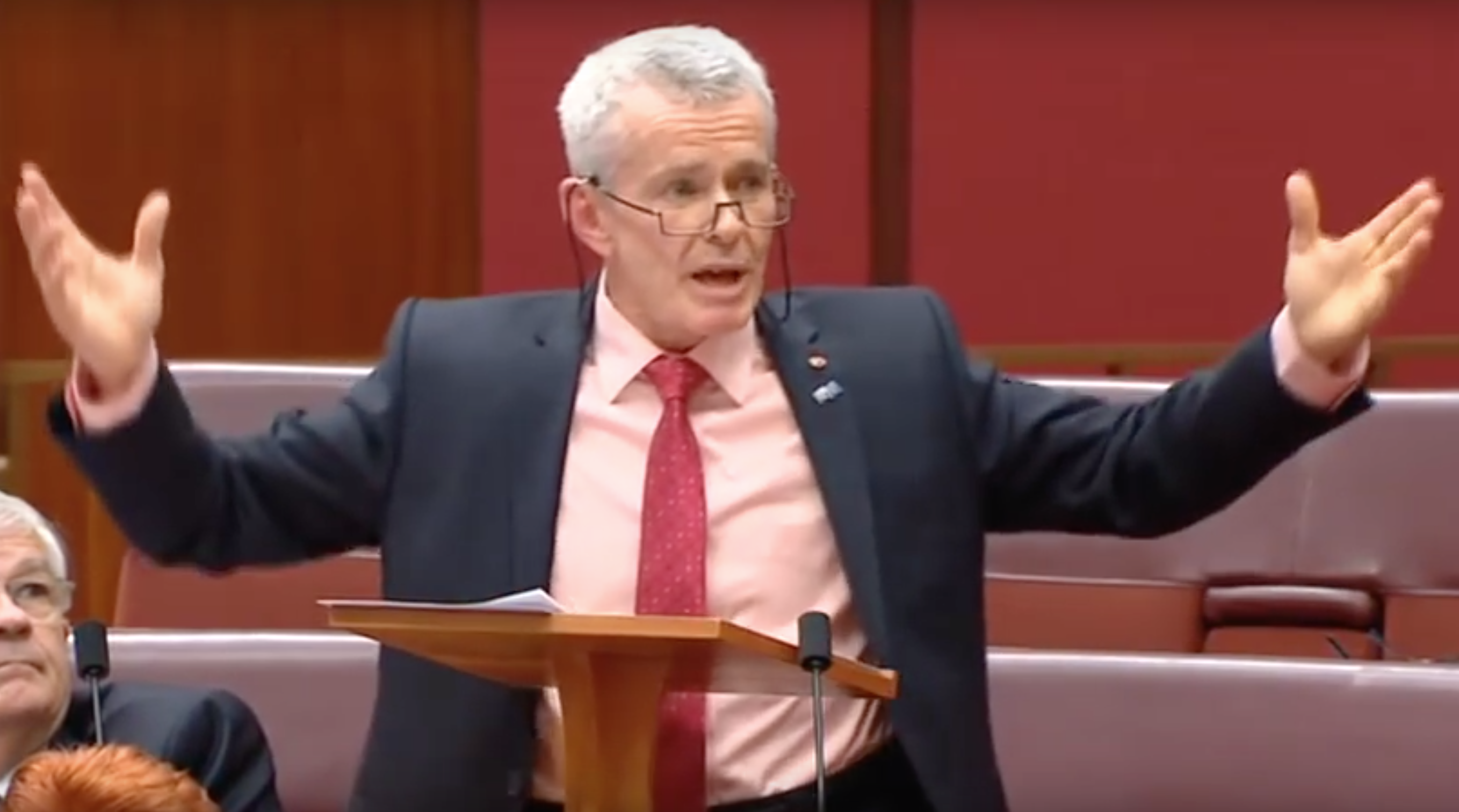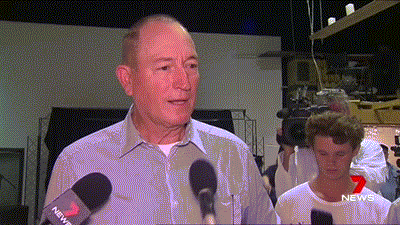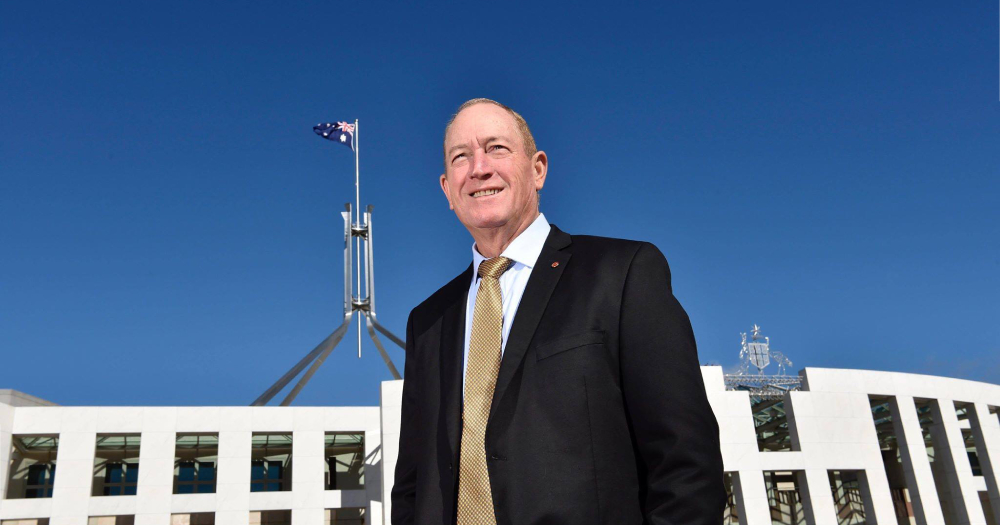One of the more disheartening stories to emerge from the aftermath of the March 15 Christchurch terror attack on two mosques was that of far-right Australian senator Fraser Anning blaming the attack on Muslim immigration.
In case you haven’t read about it, you can do so here:
Did Australians actually vote in a racist?
How Anning even got into parliament in the first place is something that has not been properly explained to people outside of Australia and who are unaware of the country's political process.
Essentially, amidst the media scrutiny of Anning, one peculiar fact has stood out: Anning had indeed been elected into parliament -- but with a derisory 19 votes to his name.
Not a typo
That's not a typo.
He literally received only 19 votes from the voting public.
He got in legitimately, but as a result of how the voting process is organised in Australia.
The Senate is the upper house of the bicameral Parliament of Australia, the lower house being the House of Representatives.
So, how exactly does a far-right candidate pushing a xenophobic agenda get into Australia's parliament as a senator?
Proportional representation electoral system
Well, the first thing to understand is that Australia utilises proportional representation (PR) voting in elections for the Senate.
This is an electoral system which seeks to award seats to parties in proportion to the number of votes they secure.
So, for example, if there are 10 seats up for grabs and Party A secures 30 percent of the votes, then they will receive three seats.
According to Australian Politics, one of the effects of having a PR electoral system is that it allows minor parties and independent candidates to win seats in the Senate.
It is also meant to be more representative of the wishes of an electorate in that different platforms and interests are proportionately represented in parliament.
Different from Singapore's system
In Singapore, it is first-past-the-post electoral system, in which voters indicate on a ballot the candidate or group of candidates of their choice, and the one that receives the most votes wins.
How small parties get elected
In Australia, each state gets 12 Senate members.
At the 2016 Australian Federal Elections, Anning ran as a member of Pauline Hanson’s One Nation (PHON) party in the state of Queensland.
Antics in parliament
Hanson -- also notorious for her right-wing political platform -- once decided to wear a burqa to the Senate chamber in a bid to emphasise her call to have the religious garment banned in Australia.
 Pauline Hanson wearing a burqa in the Senate chamber. Left photo from Pauline Hanson Facebook, right image screenshot from Guardian video
Pauline Hanson wearing a burqa in the Senate chamber. Left photo from Pauline Hanson Facebook, right image screenshot from Guardian video
The One Nation Ticket
So far so good? Well, here’s where things might get a little tricky.
Australia’s balloting paper features two different ways that electors can cast their vote: They can vote either for a party’s ticket, or they may take the trouble and cast votes for individual candidates.
If they are voting for a party’s ticket, voters must pick at least six preferences, numbering them in ascending order from most preferred to least preferred.
 Voting for a party ticket. Photo from Australian Electoral Commission
Voting for a party ticket. Photo from Australian Electoral Commission
If they are voting for individual candidates, voters must number at least 12 candidates.
It’s a slightly more arduous process as it requires voters to be familiar with each candidate and their platforms.
 Voting for individual candidates. Photo from Australian Electoral Commission
Voting for individual candidates. Photo from Australian Electoral Commission
For this reason, the majority of voters usually cast their votes for party tickets rather than picking individual candidates.
2016 elections
At the 2016 elections in Queensland, over 250,000 people voted for PHON’s Senate ticket securing the party two Senate seats.
 The results from the 2016 Australian Federal Election for One Nation's Queensland Senate ticket. Screenshot from Australian Electoral Commission
The results from the 2016 Australian Federal Election for One Nation's Queensland Senate ticket. Screenshot from Australian Electoral Commission
The first seat went to Hanson, who had personally received 21,000 first-preference votes.
The other seat went to Malcolm Roberts, who was second on PHON’s Queensland Senate ticket.
He’d only received 77 first-preference voters.
Anning was the third on PHON’s ticket -- with 19 first-preference votes.
Australian parliamentary eligibility crisis
Fast-forward to October 2017, and Australia is in the midst of a parliamentary crisis that frankly bordered on the comical.
It had come to light that several members of parliament were constitutionally ineligible to sit in parliament by virtue of the fact that they were dual citizens.
Australian constitution prohibits anyone holding allegiance to another nation from being a senator or a member of the house of representatives.
No dual citizenship
Unfortunately, for Roberts, the Australian high courts found that he had held British citizenship at the time of his 2016 Senate election, thus making him ineligible to stand as an Australian senator.
 Malcolm Roberts before he was disqualified from the Senate. Screenshot from Storyful News YouTube
Malcolm Roberts before he was disqualified from the Senate. Screenshot from Storyful News YouTube
As an aside, among the other four politicians who were also deemed ineligible to sit in parliament, was Australian deputy prime minister Barnaby Joyce.
Yep. Deputy. Prime. Minister.
Anning as replacement
Anyways, Roberts being disqualified meant that PHON had to replace him with whoever was next in line on their 2016 ticket.
Enter one Fraser Anning, brandishing a grand total of 19 first-preference votes in the 2016 elections and as mentioned above, the third member of PHON's 2016 ticket.
Quitting One Nation
But wait there’s one last twist to this story.
The plan had initially been for Anning to keep Robert’s senate seat warm while the latter sorted out his citizenship issues.
Once Robert’s denouncement of his British citizenship -- which he had received by virtue of his birth in India, at that time, a British colony -- had been processed, Anning would resign and allow Roberts to retake his place as senator.
However, Anning was not ready to play ball with PHON’s top brass.
A mere hour after his swearing in, Anning quit PHON and announced his intention to stand as an independent.
The rest, as they say, is history.

Top image from Fraser Anning Facebook
If you like what you read, follow us on Facebook, Instagram, Twitter and Telegram to get the latest updates.
